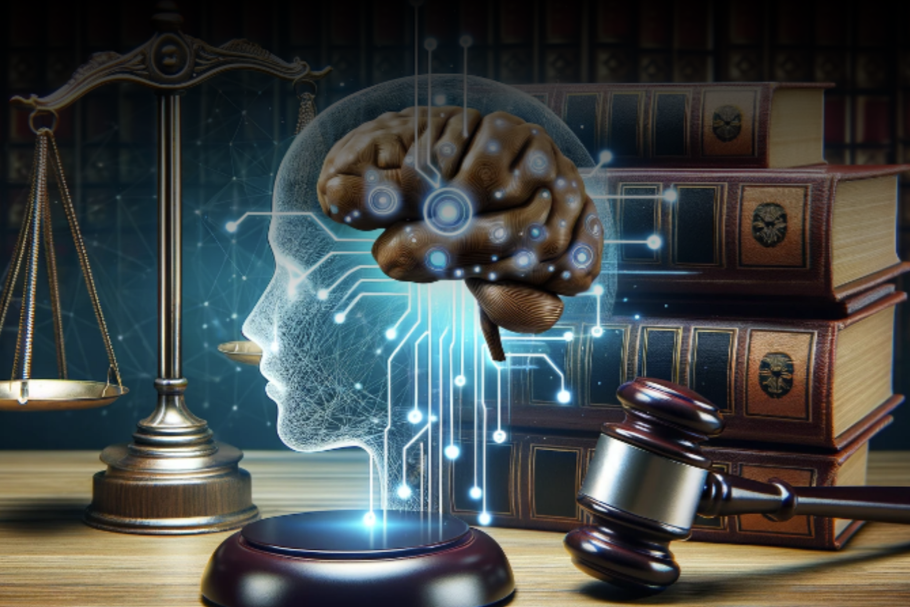 As a legal professional, you know how challenging it can be to present a case in court and make sure that the judge and jury fully understand your argument. But imagine being able to use cutting-edge legal technology and other technologies like VR and AR to bring your case to life and make it more engaging and convincing.
As a legal professional, you know how challenging it can be to present a case in court and make sure that the judge and jury fully understand your argument. But imagine being able to use cutting-edge legal technology and other technologies like VR and AR to bring your case to life and make it more engaging and convincing.
By using these technologies, lawyers can create immersive presentations that help the judge and jury understand complex scenarios and visualize evidence in a way that was never before possible. Whether it’s using 3D models to demonstrate a crime scene or showing a virtual walkthrough of a construction site, these technologies offer a new level of clarity and detail that can make all the difference in a case.
Of course, implementing VR and AR technology can be daunting, especially if you’re not familiar with the latest trends and best practices. That’s where a managed service provider (MSP) can come in. An MSP can work with your law firm to assess your needs, recommend the best solutions, and provide ongoing support to ensure that you’re getting the most out of your investment. With their help, you can take advantage of these powerful tools and give your clients the best possible chance of success in court.
The Potential Uses of VR/AR in Courtroom
These futuristic technologies can be used in a variety of ways to enhance courtroom presentations. Here are some potential use cases:
- Crime Scene Recreation: With immersive technology, you can recreate crime scenes in a way that is more accessible and understandable for the jury. By allowing the jury to virtually walk around the area and examine details in 3D, you can provide a more immersive and engaging experience than traditional photographs or video.
- Expert Witness Testimony: AR can enhance expert witness testimony by overlaying digital information on top of physical objects in the courtroom. This can make it easier for the jury to follow along with the testimony and understand complex topics.
- Medical Visualizations: Artificial reality can be used to visualize medical conditions, injuries, or surgeries. This can help judges and juries understand complex medical issues in a way that is more engaging and accessible.
- Demonstrative Evidence: VR/AR can be used to create interactive and immersive demonstrations of evidence. For example, you could use simulated reality to create a visualization of how a car accident occurred or how a particular product malfunctioned. This can help the jury understand the evidence in a more tangible and memorable way.
Ethical and Privacy Implications
One of the primary ethical concerns with using virtual and augmented reality is the potential for invasion of privacy. For example, in a personal injury case, simulated reality may be used to recreate a client’s injuries and demonstrate the impact on their daily life. While this could be a powerful tool for building empathy and understanding, it could also be viewed as an invasion of privacy. Similarly, assisted reality tools that allow lawyers to view and analyze sensitive information, such as medical records or financial statements, could raise privacy concerns. To address these concerns, it will be important for legal professionals to establish clear protocols and guidelines for the collection, storage, and use of personal information in digital and extended reality simulations. This might include requiring informed consent from clients, ensuring sensitive information is stored securely and only accessed by authorized personnel, and limiting the use of these modern technologies to only those situations where it is necessary and appropriate.
Another ethical concern to consider is the potential for desensitization or emotional detachment when using virtual and augmented reality. This is especially problematic when recreating violent or traumatic events, as it could desensitize jurors or legal professionals to the emotional impact of these situations. Similarly, displaying sensitive information such as crime scene photos or autopsy reports through spatial computing tools may lead to emotional detachment or desensitization. Legal professionals must establish clear guidelines and protocols for using these technologies in situations where emotional detachment or desensitization is a possibility. For instance, they may offer counseling services or breaks to jurors or legal professionals who are exposed to particularly traumatic content.
How Managed Service Providers (MSPs) Can Help Law Firms Implement VR/AR
Incorporating VR/AR technology into courtroom litigation can be a daunting task, especially for law firms lacking in-house expertise. Luckily, a managed service provider (MSP) can provide invaluable assistance. Here’s how:
- Technical Expertise: MSPs possess the technical expertise required to help law firms implement advanced technology in a meaningful way. From advising on hardware and software selection to recommending the best practices for courtroom usage, MSPs can help firms navigate the complex technological landscape.
- Training and Support: MSPs offer training and support to law firms on how to create and utilize VR/AR content, as well as how to integrate it into the courtroom setting. This ensures that legal professionals are equipped with the skills and knowledge they need to make the most of these powerful tools.
- Cost-Effective Solutions: MSPs can recommend cost-effective solutions that meet law firms’ budgets, maximizing the use of existing resources. This helps to ensure that cutting-edge technologies are accessible to all law firms, regardless of their size or financial constraints.
“the global virtual and augmented reality market is expected to reach $597.54 billion by 2030”
Virtual reality and augmented reality technology have already made a significant impact in the legal field. In fact, there are numerous real-world examples of how it has been used in courtrooms to help juries understand complex situations.
According to a report by Grand View Research, the global virtual and augmented reality market is expected to reach $597.54 billion by 2030, growing at a compound annual growth rate (CAGR) of 40.9% from 2022 to 2030. These advanced technologies have opened up new possibilities for law firms and lawyers to enhance their courtroom presentations. By leveraging AR/VR tools, lawyers can create more immersive and compelling visualizations of their cases, making it easier for judges and juries to understand complex legal scenarios. Additionally, a managed service provider (MSP) can assist law firms in implementing and using futuristic technologies effectively.
About Our Contributor, Alp Isin, President of I.T. ISIN Solutions
Alp Isin is an experienced IT professional who is passionate about delivering high-quality technology solutions to law firms. As the President of I.T. ISIN Solutions, a leading Managed Service Provider for law firms, Alp is dedicated to helping legal professionals improve their operational efficiency and productivity.
With over 20 years of experience in the IT industry, Alp has gained a deep understanding of the unique challenges that law firms face in managing their IT systems. He has built a reputation for providing exceptional support services that are tailored to meet the specific needs of his clients to optimize their operations, reduce costs and achieve their business goals.
[Image credit: DALL-E]


